in conversation with sean crowley
The vintage clothing authority talks about learning the ropes from one of the best menswear dealers, his days at Ralph Lauren, how he shops for the store, and much more.
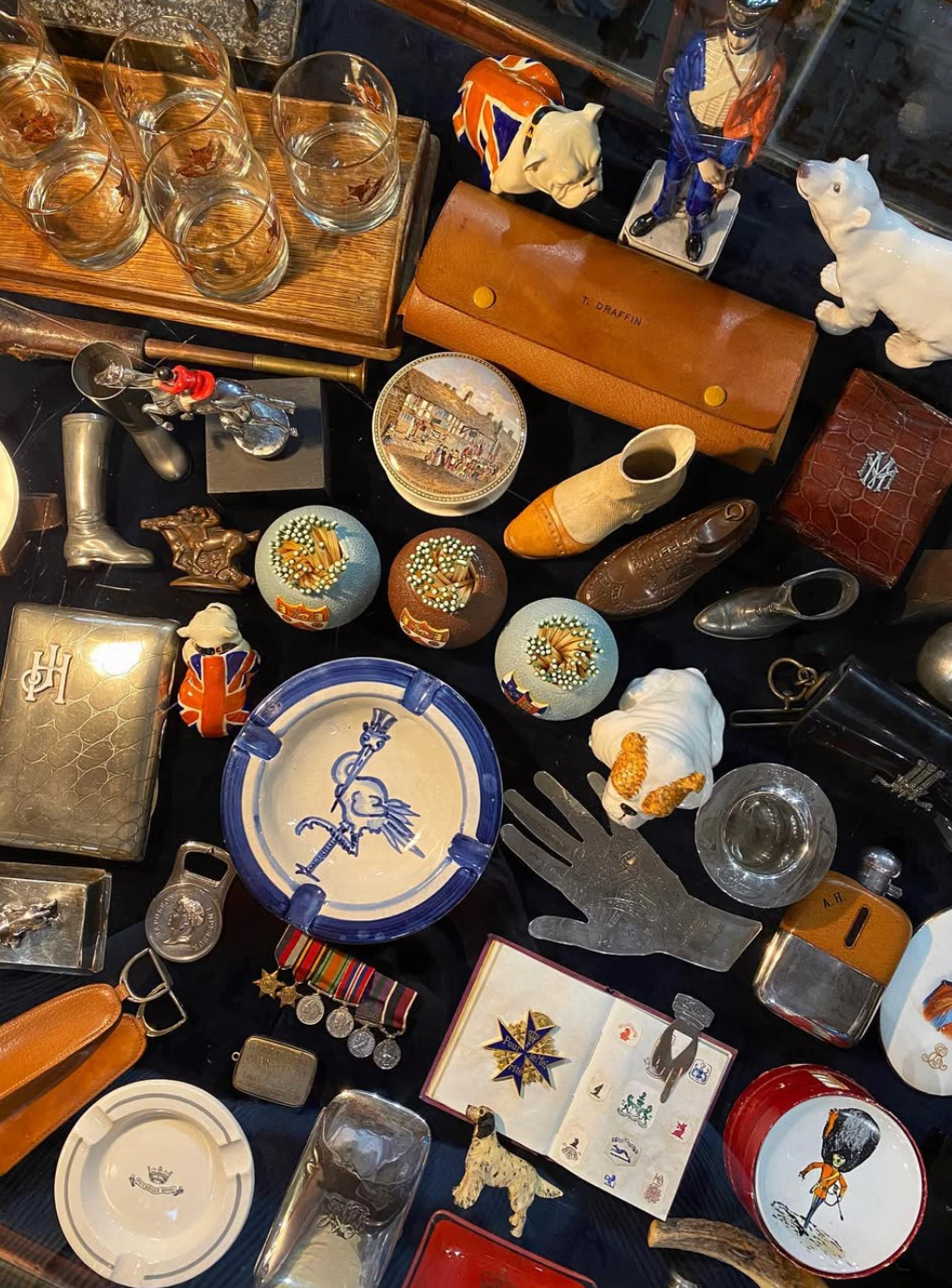
The vintage clothing authority talks about learning the ropes from one of the best menswear dealers, his days at Ralph Lauren, how he shops for the store, and much more.
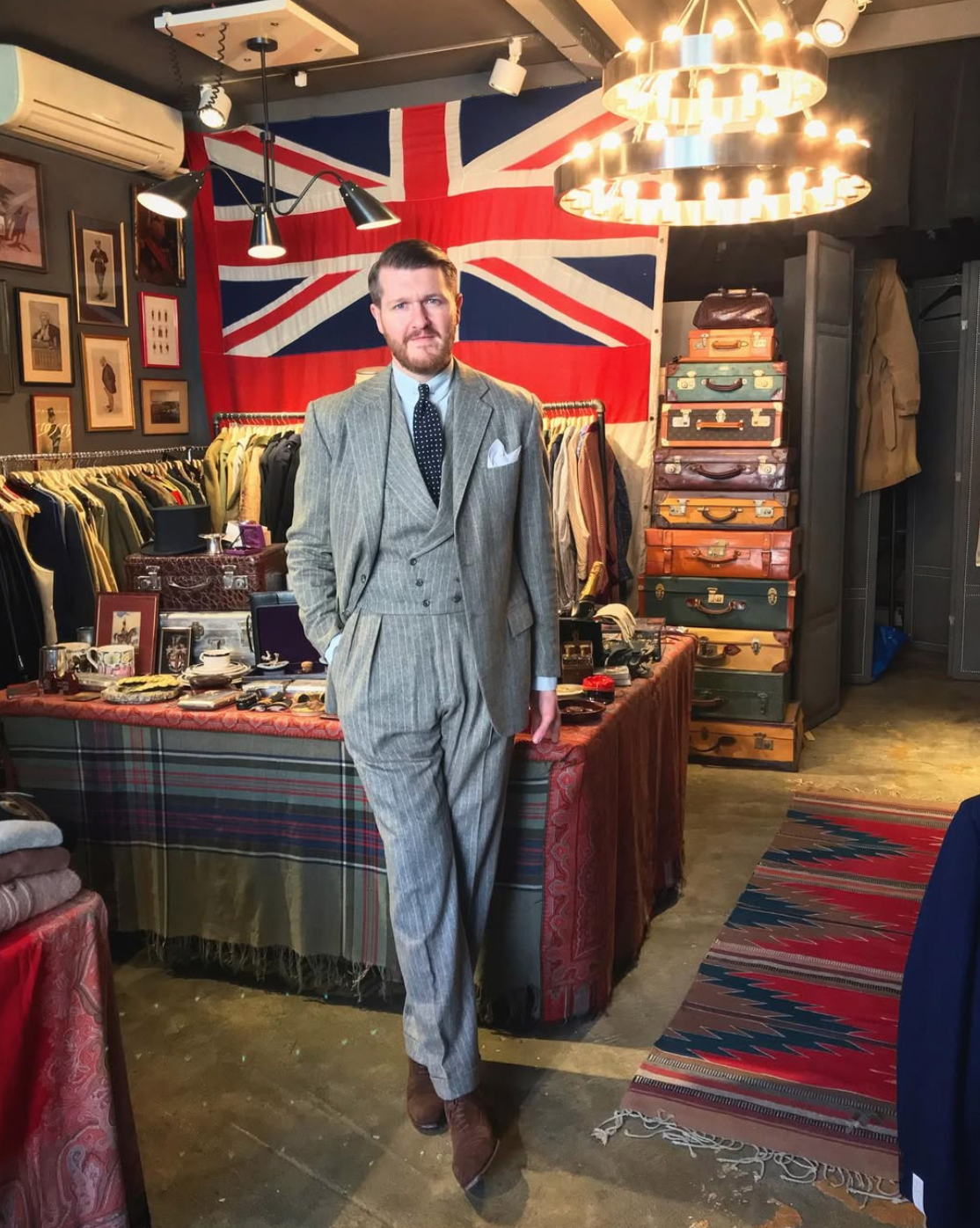
Gladwyne, Pennsylvania
Shopping vintage has become quite the buzzword these days, and while it remains a treasure trove for snagging unique threads, it can feel like a full-time job sifting through the heaps of “cool guy outfits” your Instagram algorithm keeps throwing at you.
But just under the Manhattan Bridge in a cozy Brooklyn storefront lies Crowley Vintage boasting around 50,000 items. Sean Crowley, the mastermind behind this gem, has curated a collection that’s simply unparalleled. So, if you're blindfolded and throwing darts at a wall of options, you might land on a 1960s Brooks Brothers tweed suit, some charmingly eccentric 20th-century English umbrellas, or stacked-to-the-ceiling leather luggage. No matter how you slice it, stepping foot into Crowley Vintage guarantees you’ll leave with something time-tested and super tasteful.
Crowley has been collecting clothes since he was five, designed for Ralph Lauren, and his appreciation for British Tailoring is second to none. I had a chance to sit down and catch up with him to see how the hell he got into this clothing thing, why the 1930s is his favorite clothing decade, and why making style mistakes is necessary for figuring out your personal taste.
Above - Sean Crowley photographed at the first location of Crowley Vintage. Gowanus, Brooklyn.
I grew up in a family of collectors, with my father being an antique store, flea market, and estate sale enthusiast. This naturally exposed me to unique, vintage items from an early age. My fascination with menswear began in middle school, sparked by watching Masterpiece Theater with my grandfather. I was captivated by 1930s British men’s style—it was unlike anything I’d seen before, and I instantly fell in love with it.
A pivotal moment came when I met Bobby Garnett, also known as Bobby from Boston, one of the best vintage menswear dealers in the U.S. His influence was like having Yo-Yo Ma as a music teacher—except for vintage menswear. That encounter, along with my upbringing and early inspirations, set me on the path not only to explore vintage clothing but to eventually work in the fashion industry.
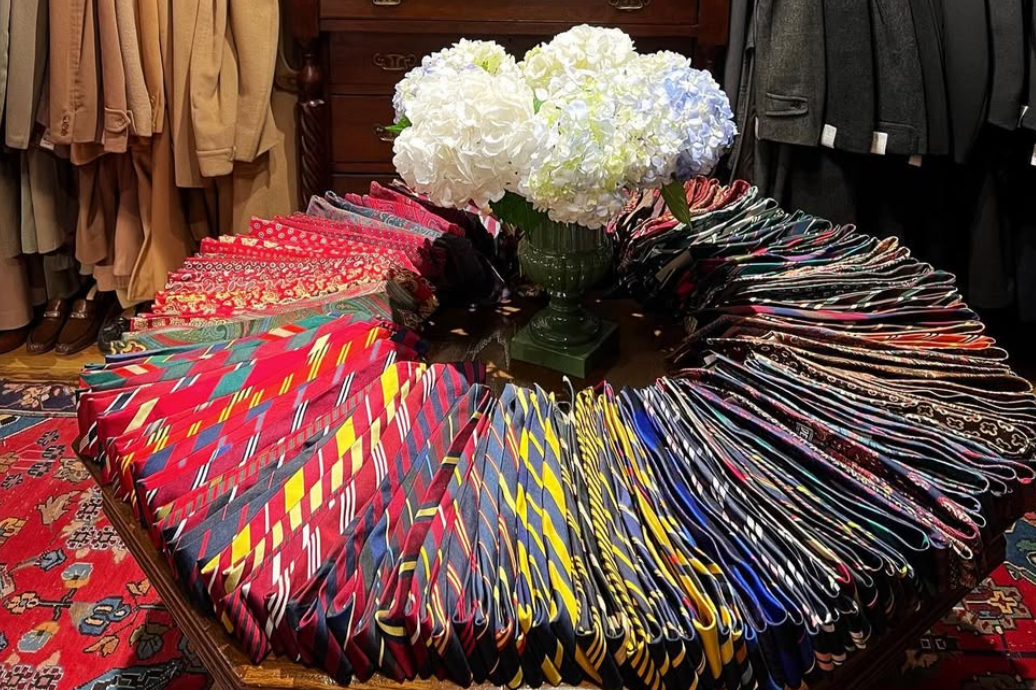
A small part of the impressive tie collection at Crowley Vintage. Dumbo, Brooklyn.
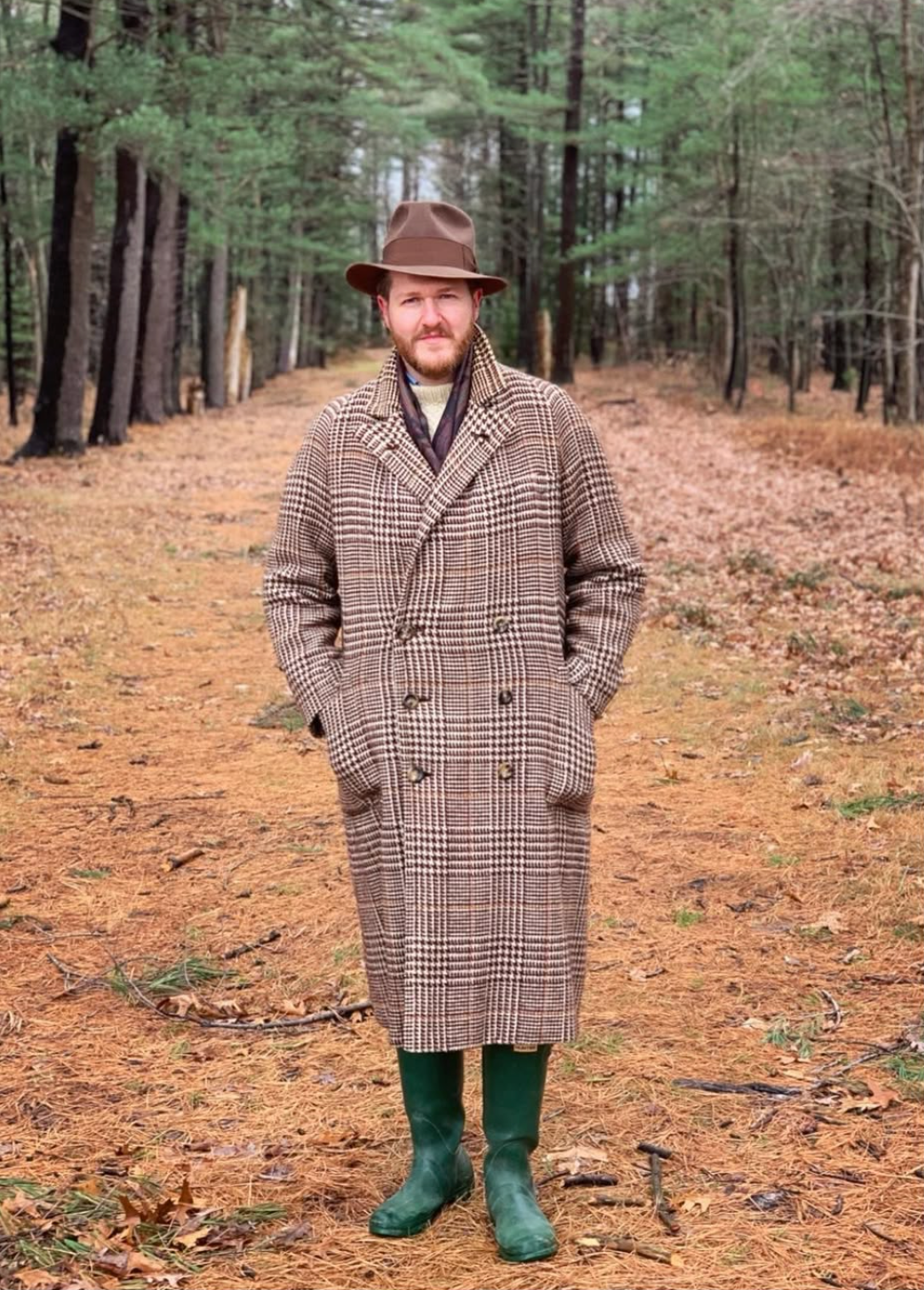
How has your design background shaped your sharp attention to detail when selecting clothes for your shop?
Growing up, my ADHD unknowingly became a superpower for observation, sharpening my eye for detail. My dad, who I’m pretty sure also had undiagnosed ADHD, was equally obsessed with nuance, so I naturally picked up the habit of noticing the little things. That skill only deepened through my work with Bobby, buying and selling vintage clothing in the US and UK, where I had hands-on access to unique pieces. Studying them inside out really shaped my understanding of quality and craftsmanship. Later, my time at Ralph Lauren, a brand known for its attention to detail, only reinforced that appreciation.
In menswear, especially over the last century, it’s often the subtle differences that matter. It’s not about drastic changes every decade but about small, meaningful evolutions. Knowing what to look for in these shifts is key to understanding and valuing the craft. That’s why having an eye for detail is so essential—it’s the difference between seeing two similar white button-ups and knowing they’re worlds apart.
Above - Crowley in Field Sports Mode. Hamilton, Massachusetts.

Crowley with old boss and mentor, the legendary Jerry Lauren, at Crowley Vintage. Gowanus, Brooklyn.
Your first design gig was with the legendary brand Ralph Lauren. Can you share a standout moment or lesson from that experience? Why do you think so many RL alumni go on to have such successful careers?
For me, the key to my growth was having truly remarkable mentors—veterans who had spent decades refining their craft. I wasn’t learning from the latest influencers but from legends like Jerry Lauren, Jerry Myers, and Ralph Lauren himself. My boss, Jerry Myers, was especially impactful. Even in his 70s, he was relentless in his pursuit of excellence, never allowing anything less than the best. While it frustrated me at the time, I now realize how much his uncompromising standards shaped my work ethic. Working at Ralph Lauren also taught me the value of instinct and personal taste over trends. We didn’t rely on market research or chase the next "it" color; instead, we designed for ourselves and for Ralph. If we loved a vintage piece, we might incorporate a detail from it—even if only a handful of people would notice. People who leave Ralph Lauren sometimes go on to do things that are very "Ralph-adjacent," which makes sense. But others take different paths, like Vera Wang. You wouldn’t immediately associate her with Ralph, but the influence is there. The company teaches you to have a great eye for color, which I think is one of the most underrated aspects of Ralph Lauren. It cultivates something in people that sets them up for success, wherever they go.
Your appreciation for British tailoring really shines through in the store. What originally drew you to that style, and how does it influence the way you dress?
That period in fashion, for both men and women, truly felt like a golden age. While I hesitate to romanticize the past, there was an undeniable harmony in the 1930s—the silhouettes, fabrics, and patterns came together with a softness that stood apart from the bolder styles of the 1920s and 1940s. Although I appreciate those eras, the subtle elegance of the 1930s is hard to replicate, and it's no surprise that Ralph Lauren often draws inspiration from that time. Honestly, you could walk down the street today in a 1930s suit, and while people might think, "Wow, that guy is really well-dressed," they wouldn't necessarily say, "Is he wearing a costume?" It would just look like a really sharp suit. There’s a certain magic to it that still resonates today. Then there are days when I’m all about mixing things up—throwing together different styles, blending eras, and just experimenting. And other days, I think, "Fuck it, I’m going full period," whether it’s the 1930s, the 1960s, or whatever strikes my mood. I don't care if it looks a bit costumey; I’ll lean into it fully. So, there really aren’t any strict rules when it comes to how I approach fashion—it’s all about what feels right in the moment.
Can you walk me through the thought process you go through when deciding if something is the right fit to bring back to the shop?
I feel like there are so many factors at play here. One big issue with men's vintage is the near-religious reverence for certain labels. It’s like, “This pair of jeans has the right tag, so it’s automatically legit,” and while I get the comfort in that, it’s kind of boring. We’ve got this sacred list of 50 or so 'blessed' labels, and everything else gets ignored. It creates a safe space where no one questions your taste, but it also takes the excitement out of discovery. I’m not immune to it either—labels serve a purpose, and when I spot a well-made piece with a familiar tag, it’s hard not to appreciate it. But what really excites me are the surprises, the offbeat finds with no recognizable label or history, like a hand-knit sweater with no provenance. The obsession with brands, especially in online menswear culture, has led to a stagnation in real taste. Talk to 100 enthusiasts, and they all have the same wish list. It’s like we’ve become carbon copies of each other.
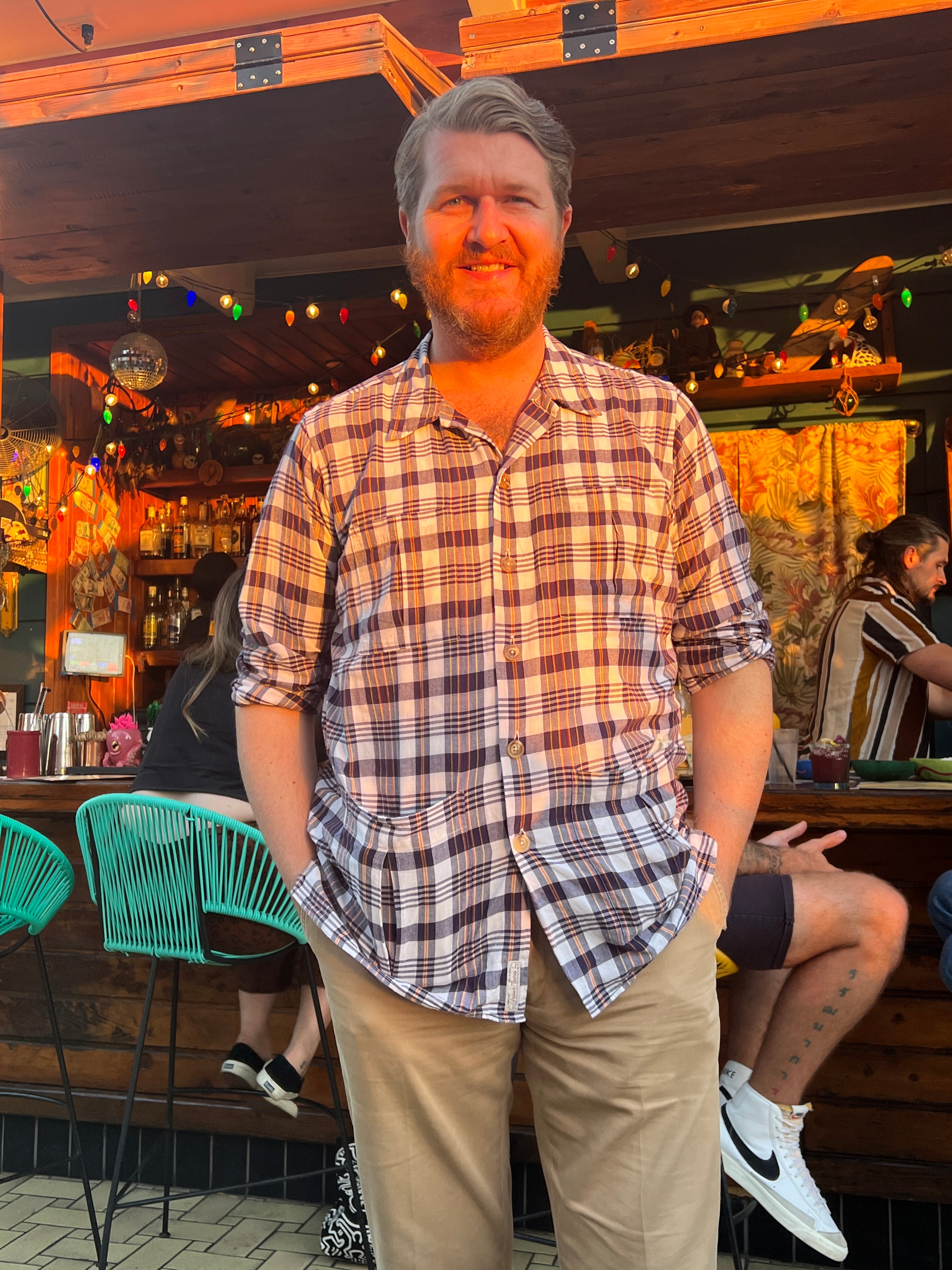
Crowley is shown here sporting 'Vacation Casual'. Los Angeles, California.
Without giving away all your secrets, what key skills or instincts do you think set a great vintage picker apart?
I think it ties back to what I was saying earlier. It’s about having an eye for quality construction and understanding different periods. For me, after doing this for so long, I can see a piece—even if it’s from a maker I’ve never heard of or a country I'm not familiar with—and break it down. I can synthesize the details and say, 'This feels like early ’70s,' even if there’s no union tag or date stamp. It’s really about developing a strong visual sense of vintage clothing. A lot of it comes down to taste - just having an instinct for what’s a great color and what’s not.
We've seen a huge resurgence in the love for vintage over the last few years. Why do you think this trend has taken off, and how do you feel about the growing interest?
The secondhand market, even beyond the label of "vintage," holds undeniable value. While older collectors might bemoan the skyrocketing prices of pieces they once snagged for a few bucks, there's a silver lining. Y2K fashion, often dismissed as junk, is still keeping clothes out of landfills, and that's a win in my book. Whether it's Y2K or another trend, if someone’s enjoying it and extending the life of a garment, that’s what counts. Personally, I’m not into selling those styles, and I might not find them aesthetically pleasing, but I respect that others do. The rise of secondhand fashion is a positive shift—people are recognizing the value in old clothes rather than discarding them. However, there’s a flip side where some overestimate the worth of "grandpa’s old stuff," thinking everything is a goldmine just because of a few high-priced sales online. The internet has also changed the landscape of vintage shopping. When I moved to New York, there were countless vintage stores, but now most have moved online. This has created a generation of enthusiasts who miss out on the tactile experience of handling clothes, which I believe is essential for developing personal taste. Even if you don’t find your dream piece at Goodwill, touching fabrics and trying things on is an education—and that hands-on learning is how you grow, even if it means making mistakes along the way.
Crowley was an early and enthusiastic adopter of the August Special Aviator Boot, shown below in Roughout Horsehide. Dumbo, Brooklyn.
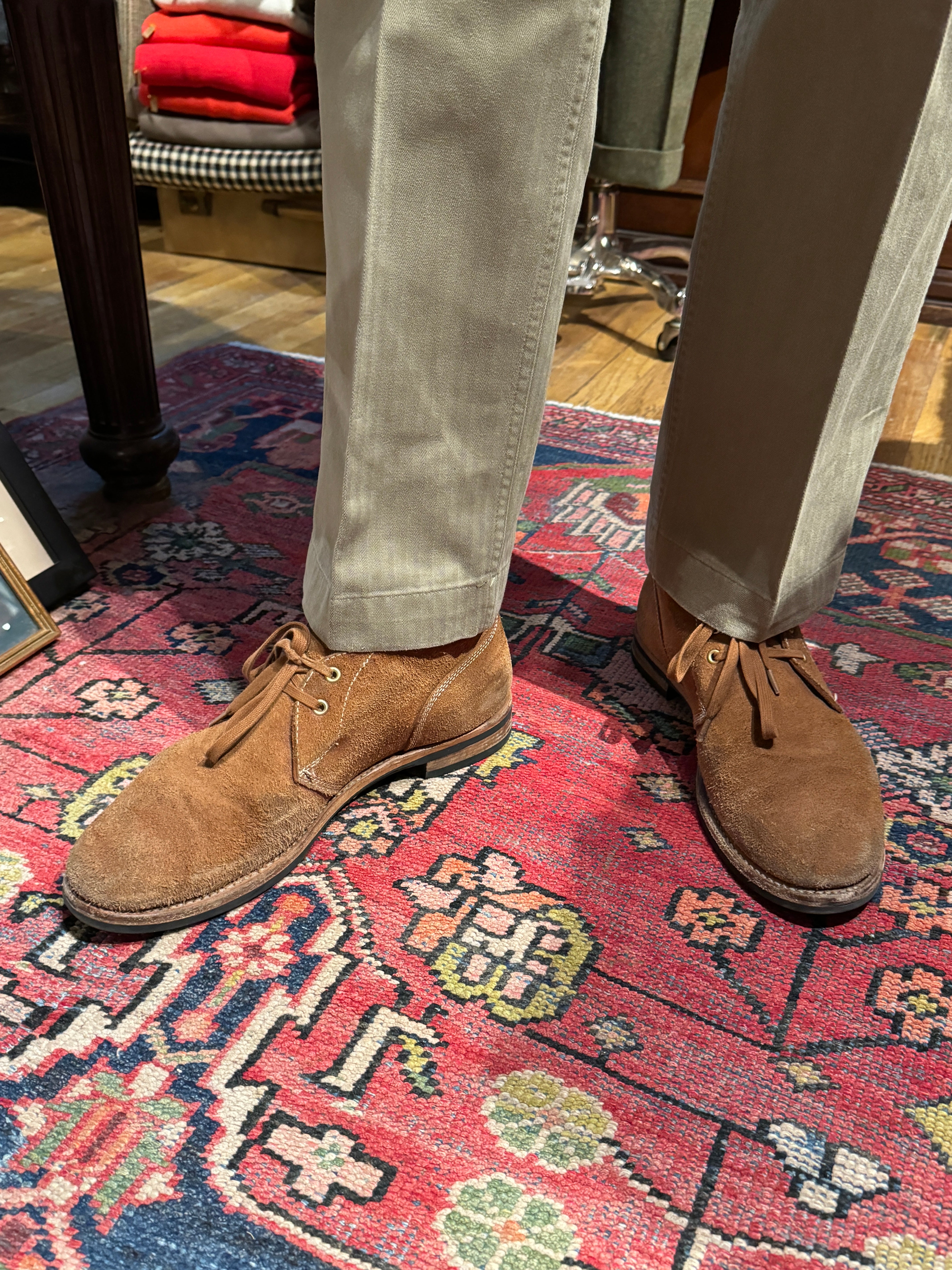
Aside from the business side of your shop, do people often use your collection as inspiration for design, or even for costume design in films and TV?
I work with a wide range of customers, from fashion designers to stylists. Some can be challenging, but overall, it’s a rewarding experience, allowing me to dive into the exciting world of fashion and costume. I collaborate with renowned brands like Ralph Lauren, Brooks Brothers, and J.Crew, alongside more unexpected names like Marc Jacobs and Coach. The variety keeps my work interesting and dynamic. Recently, I sold a collection of vintage boxer shorts from the 1930s and 1940s to Coach, and while I have no idea what they plan to do with them, I love the creativity they inspire. I always make it a point to ask designers about their vision for the pieces they buy, especially when those items will be featured in a runway collection. Seeing how it all comes together is an exciting part of the job.
Have you discovered your ultimate grail piece yet? Or is there still something elusive you're chasing after?
I mean, God, there’s just a million things out there, and that’ll never end. I’ve been collecting since I was five, always chasing those rare, seemingly impossible-to-find pieces. It’s the thrill of the hunt, and every now and then, you stumble upon that elusive item, making the chase worth it. I remember getting into menswear after watching old movies and falling in love with the elegant umbrellas the characters carried—slim, with beautiful handles. After years of searching flea markets and convincing myself, that I'd never find one, I finally did. Now, I’ve got a collection of about thirty!